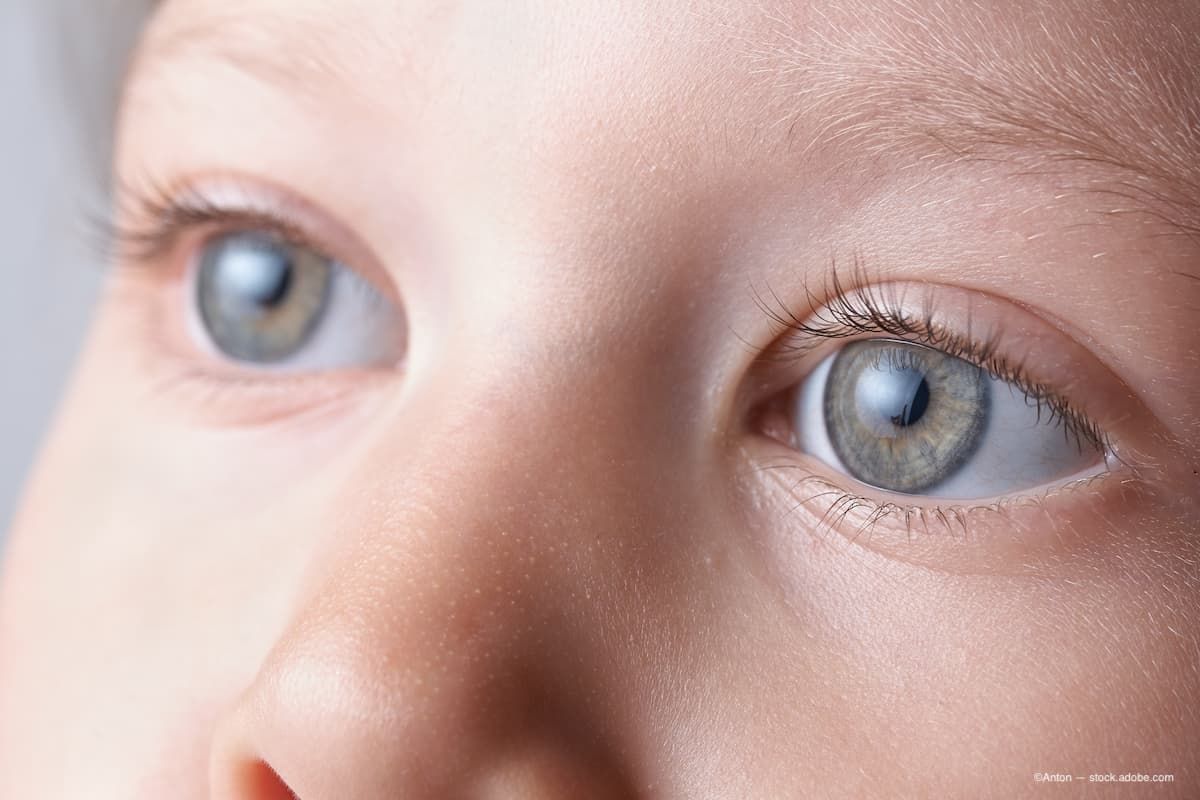Publication
Article
Digital Edition
Surgical management of posterior uveitis in children
Author(s):
Vitrectomy is a tool that can help surgeons curb complications.
(Image Credit: AdobeStock/Anton)

Reviewed by Wai-Ching Lam MD, FRCSC
Vitreoretinal surgery can be used to manage secondary complications of uveitis, according to Wai-Ching Lam MD, FRCSC, a clinical professor and head of the Department of Ophthalmology at Vancouver General Hospital, University of British Columbia, Vancouver, Canada.
Speaking at the 33rd Annual Jack Crawford Day Conference, an annual pediatric ophthalmology update organized by the University of Toronto, Lam noted that uveitis is considered to be responsible for 10% of cases of blindness worldwide and pointed out that surgery for uveitis is indicated for visual rehabilitation, the management of complications, and diagnostic purposes.
Vitrectomy can help to rule out malignancy and infection. Cytology remains the gold standard to detect malignant cells, and use of cultures and polymerase chain reaction for diagnosis of infection, with the reported diagnostic yield ranging from 14.3% to 61.5% depending on the case and surgical technique, according to Lam.
Therapeutic vitrectomy can help to control inflammation and manage recalcitrant cystoid macular edema, but it also decreases the duration of the therapeutic effect of intravitreal medications, Lam explained.
One published study found combined lensectomy-vitrectomy was performed on 25 eyes in 20 patients. Postoperative follow-up of 15 months showed that in 24 of 25 eyes, there was visual improvement, suggesting lensectomy-vitrectomy on reducing the number and severity of recurrent attacks of uveitis.1
Lam pointed to a systematic review of outcomes with therapeutic vitrectomy where the authors included 44 papers covering a 24-year period. The review included a total of 1762 eyes of 1575 patients.2
“They (the authors) found that after vitrectomy the visual outcome improved in about 68% of eyes and it helped to reduce the systemic use of medications and the cystoid macular edema rate reduced from about a third (36%) to about 18%,” Lam explained.
Childhood uveitis
When uveitis presents in childhood, it is a serious and potentially blinding disease that is primarily treated with steroids, Lam noted.
Another investigation looked at 28 eyes of 20 patients where pediatric patients with uveitis underwent pars plana vitrectomy at a mean age of 11.2 years, with a mean follow-up period after surgery of 13.5 months.3
There was pars planitis in 15 eyes, idiopathic panuveitis in 8 eyes, and juvenile idiopathic arthritis–associated iridocyclitis in 5 eyes.
“At the last follow-up, 96% (27 of 28 eyes) showed no signs of any active uveitis following pars plana vitrectomy,” Lam said. “They were able to reduce the systemic medications required to control the inflammation and the visual acuity improved significantly in those who received vitrectomy.”
There are long-term data on the use of pars plana vitrectomy in cases of pediatric uveitis where inflammation is resistant to medical therapy.4
The mean age of patients in the retrospective study was 8 years and the mean observation period was 10.3 years. Investigators found that the average preoperative visual acuity of 0.32 was enhanced to an average postoperative visual acuity of 0.8.
“Vitrectomy had a beneficial effect,” Lam said. “The preoperative visual acuity and the presence of clinically significant macular edema are the most accurate predictors for the functional outcome of the long-term effect of pars plana vitrectomy.”
Some uveitis presentations are more common in pediatric patients, such as pars planitis, noted Lam, who said it represents one-fifth of all cases of pediatric uveitis.
Medical therapies such as topical and oral steroids and systemic immunosuppressants can be initiated to treat pars planitis, and interventions such as cryopexy have been performed in patients who are unresponsive to steroids, Lam noted.
A study published in 1973 was the first to demonstrate that cryopexy is effective in patients with pars planitis who were not successfully treated with steroids, and another study published in 1988 suggested benefit with cryopexy for cases of pars planitis refractory to steroids.5,6
“It is very effective for pars planitis that is refractive to steroids and for treating the peripheral neovascular membrane,” said Lam, noting that peripheral cryoablation also leads to fast resolution of cystoid macular edema.7
Epiretinal membrane is another concern in uveitic macular edema, and surgical intervention may be the more effective treatment over steroids for this presentation, according to Lam.8
Lam pointed to several investigations that found vitrectomy with epiretinal membrane peel in eyes with uveitis improved or stabilized visual acuity, especially in eyes with macular traction, but in the absence of traction, outcomes were variable.
Still another significant complication that can occur with uveitis is hypotony, which results from traction on the ciliary body from cyclitic membrane, noted Lam, adding that 1 surgical approach is excision of the cyclitic membrane.
One study out of the Hospital for Sick Children in Toronto examined experience with cyclitic membranectomy in children who developed cyclitic membrane in the context of complex ocular pathology, Lam said. He noted that direct dissection of the membrane after excision of the lens capsule was performed in the study. Either the anterior or posterior approach including the use of endoscope were successful in improving the final intraocular pressure and visual acuity.

Wai-Ching Lam MD, FRCSC
E: 604-875-4199
Lam has no financial disclosures related to this content.
References:
Diamond JG, Kaplan HJ. Uveitis: effect of vitrectomy combined with lensectomy. Ophthalmology. 1979;86(7):1320-1329. doi: 10.1016/s0161-6420(79)35395-7
Becker M, Davis J. Vitrectomy in the treatment of uveitis. Am J Ophthalmol. 2005;140(6):1096-1105. doi:10.1016/j.ajo.2005.07.017
Das T, Pathengay A, Hussain N, Biswas J. Eales’ disease: diagnosis and management. Eye (Lond). 2010;24(3):472-482. doi:10.1038/eye.2009.315
Darsová D, Pochop P, Štěpánková J, Dotřelová D. Long-term results of pars plana vitrectomy as an anti-inflammatory therapy of pediatric intermediate uveitis resistant to standard medical treatment. Eur J Ophthalmol. 2018;28(1):98-102. doi:10.5301/ejo.5001020
Johnstone MA, Grant WG. Pressure-dependent changes in structures of the aqueous outflow system of human and monkey eyes. Am J Ophthalmol. 1973;75(3):365-383. doi:10.1016/0002-9394(73)91145-8
Haik GM, Breffeilh LA, Barber A. Beta irradiation as a possible therapeutic agent in glaucoma; an experimental study with the report of a clinical case. Am J Ophthalmol. 1948;31(8):945-952. doi:10.1016/0002-9394(48)92523-9
Sohn EH, Chaon BC, Jabs DA, Folk JC. Peripheral cryoablation for treatment of active pars planitis: long-term outcomes of a retrospective study. Am J Ophthalmol. 2016;162:35-42.e2. doi:10.1016/j.ajo.2015.11.009
Paulsen AJ, Cruickshanks KJ, Fischer ME, et al. Dry eye in the beaver dam offspring study: prevalence, risk factors, and health-related quality of life. Am J Ophthalmol. 2014;157(4):799-806. doi:10.1016/j.ajo.2013.12.023

Newsletter
Don’t miss out—get Ophthalmology Times updates on the latest clinical advancements and expert interviews, straight to your inbox.




